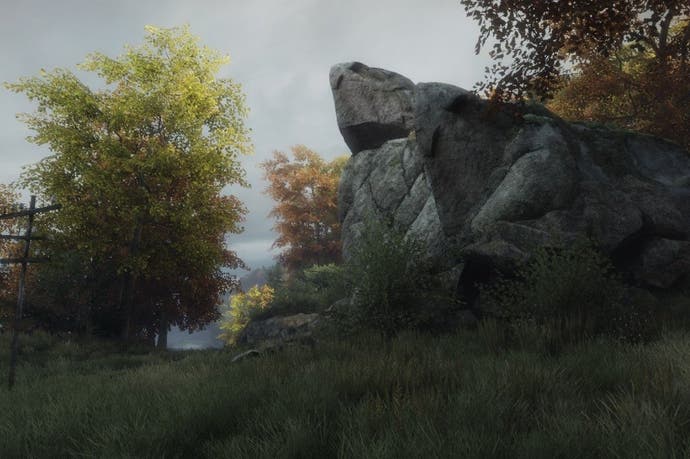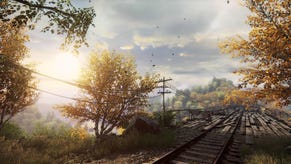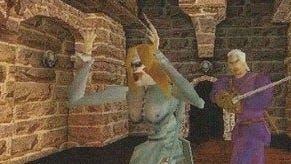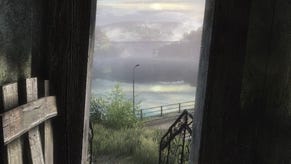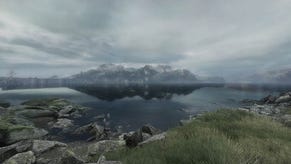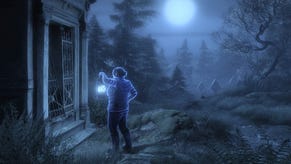Mapping the interior in The Vanishing of Ethan Carter
The landscape's the star in The Astronauts' astonishing debut.
I would hate to spoil the many surprises that The Vanishing of Ethan Carter holds for its players, so don't read this article until you've finished the game.
There's a rock in Red Creek Valley that I really love. I love it because it looks like a shark, snout thrust skyward, erupting from the water, mouth open and ready to bite. But I really love it because, if you approach from the opposite direction, it doesn't look like a shark at all. It looks like a blade of stone, spun upwards out of the ground. It looks like a rock.
Will you see a shark? Maybe, maybe not. I've asked a handful of people in the office, and received a handful of answers. And that's entirely appropriate, really. The Vanishing of Ethan Carter's a game about imagination and escape, about looking at the world in a way that might allow you to break free of its confines. It's a grind to stay in this dilapidated rustic mining shanty, but it can be dangerous to leave, too. Out there be monsters. Out there be sharks.
The Astronaut's debut is that rarest of birds, then - a game with something to say. Wonderfully, I think it does most of its talking with its map. The game is the map, in fact - a little like a Metroidvania (and Ethan Carter certainly shares a lot of subtle gating techniques with the best Metroidvanias) but a lot like The Legend of Zelda: A Link to the Past, where the map was a puzzle and the puzzle turned out to be the entirety of the experience. Binding story and landscape together as tightly as this may be why Ethan Carter's purposefully hokey plot carries so much weight, in fact, because where the two join you get shared mechanics. Protagonist Paul Prospero - how's that for purposeful hokiness? - is hunting for a missing child and exploring a strange, isolated landscape that's entirely new to him. At the very same time the player is testing the boundaries of a game that seems to want to defy its genre, to defy multiple genres. Player and protagonist, you're both joined in the central act of investigation, digging through a story and a landscape that slyly reject the kind of plodding Linnean impulses that playing games and (presumably) solving crimes too often seeks to impose. This is a first-person shooter with RPG elements. This is a crime of passion. Frequently such an approach leads to diminished returns; sometimes it leads to straight-up category errors.
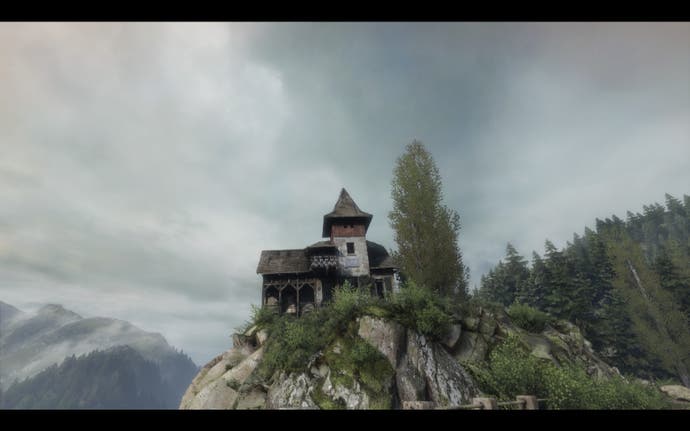
Ethan Carter's map is large and intricate and wonderfully atmospheric. It steers the Unreal Engine away from robots and starships for the most part and does an astonishing job of conjuring gorse and bramble and fir from it instead. It's a technical marvel for sure, but I suspect the whole thing's also built with an almost creepy understanding of psychology. Everyone I know who's played through this adventure has the same response to that moment right at the beginning where Prospero emerges from the darkness of a train tunnel and begins his search. Other games might land you with a sense of ludic panic here: Skyrim Paralysis. There are so many places to go, where do I start? How does this all work? Ethan Carter somehow manages to make you feel excited about the opportunities that lie ahead rather than locked-up by them, however. It offers a tempting spar of orientation by means of the train track you're walking down, but it also beckons you off that track and springs a couple of nasty tricks on you in the first five minutes. Quickly, you begin to understand that anywhere you think you can go, you probably can, and that the invisible walls that hem you in will make sense - no drops that would hurt you, no heights you'd need to be a gymnast to scale. At the same time, you start to realise that each of the game's puzzles responds to a kind of logic that emerges from sheer playfulness. You're in good hands, and this wild, rangy map holds a tidy game where you can approach things in any order without losing the crucial sense of mystery, of discovery, of storytelling.
Good hands indeed. There's an artfulness to the map as well as a deft understanding of the ways that players like to explore. Take the question of light, for example, as the Astronauts carve up one huge skyscape by blocking out sightlines on an ad hoc basis using nothing more tricksy than trees and hills. This allows for a single location that manages to capture a range of different times of day with no funny business that the player might spot. Walk to the left when you step away from that train track, and you get rosy dawn. Later on, distance, and some well-placed mountains, give you the gloom of early dusk. Walt Disney would be proud.
Disneyland's always a touchstone with video games, but Ethan Carter actually put me in mind of a far more humble piece of magic. I'm thinking of those origami fortune teller gadgets - we used to call them Fniffer-Fnaffers at school, but they have almost as many names, I gather, as there are bored children with spare stationery - where you fold a sort of beak-shaped device back and forth in your hands and then peel open one of the interior surfaces to reveal a motto or a joke or a warning. This is Red Creek Valley to me, a complex set of planes that give way to an increasingly complex set of interior surfaces, whether you're talking about Prospero's mystic reconstructions of murder scenes, or a house with a super-positioned interior. Everything has an obverse and a reverse in Ethan Carter, from promising looking rock formations to the scraps of paper - you can turn them over in the inventory - on which Ethan scribbles his pulp fantasies. Part of the genius of the overall effect is that various landscapes are made to overlap and coexist, to bleed together in frightening ways - and in a single place that seems contiguous and coherent.
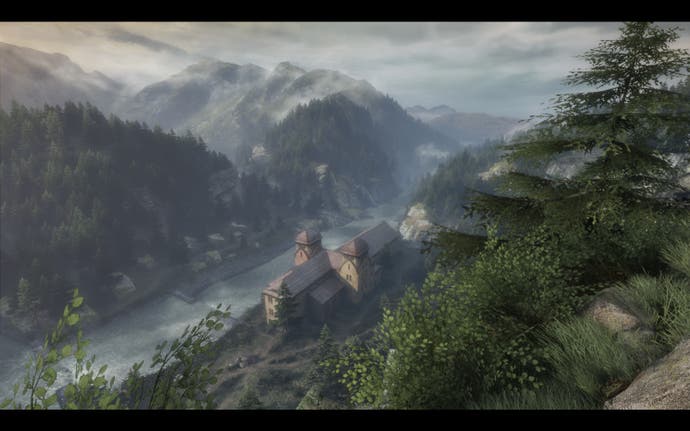
It's telling, in fact, that the game's weakest moments occur underground, during a sequence in which you leave the main map and its huge, romantic skies, to instead forge a path through a subterranean maze, ducking attacks from a patrolling AI. There's a wonderful Lovecraftian pay-off for your toiling in the darkness, but it does still feel like toil - like the game has broken an unspoken promise. It's not only fallen back on more traditional puzzle mechanics for a few clumsy minutes, but it's fallen back on a more traditional video game map in order to do it.
Thankfully, it's over quickly, and then you're back up out in the open, tackling challenges which, as Tom asserts in his review, may well provide you with some of your most sparkling memories from any game you've played this decade. Mostly, though, I suspect you'll be left not with the brilliant, puzzle-box architecture, the jump cuts, or the dramatic dioramas of dimly perceived tragedies, but with memories of that map - memories of Red Creek Valley, where a development team that once, back in the days of Bulletstorm, opted for XP bonuses just to get jittery players to watch its in-game cut-scenes, has pieced together a detailed and transporting world that you can explore at any pace, from any angle, and still find something that feels hand-made, intimate, and open to interpretation.
